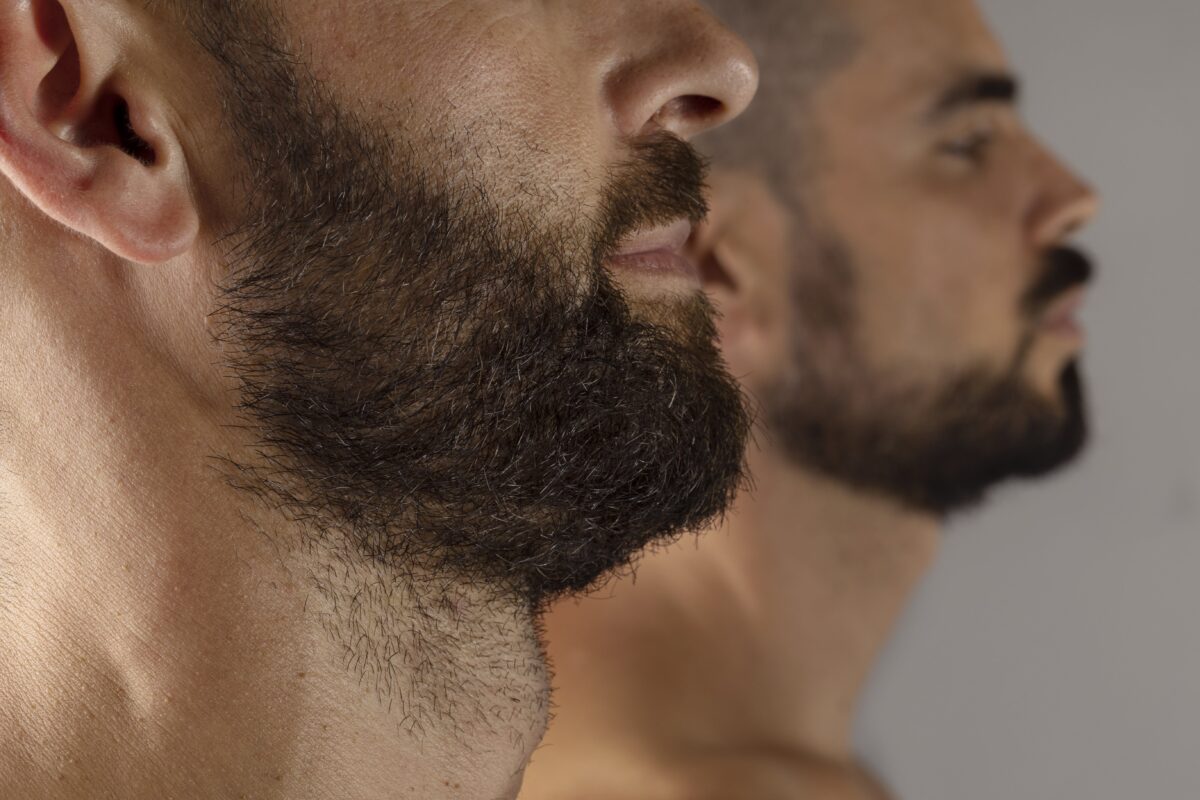Comprehensive Guide to Beard Transplantation: Process, Aftercare, Expectations, and Limitations

Beard transplantation has become a popular solution for men looking to enhance facial hair density or fill in patchy areas. Whether it’s due to genetics, scarring, or personal preference, beard transplants offer a permanent and natural-looking way to achieve a fuller beard.
The Process of Beard Transplantation
The process of a beard transplant is similar to that of a hair transplant and usually involves two main techniques:
- Follicular Unit Extraction (FUE):
- This is the most common method for beard transplants. Hair follicles are individually extracted from the donor area (usually the back or sides of the scalp) using a micro-punch tool. These follicles are then implanted into the beard area.
- FUE is preferred because it leaves minimal scarring and offers a quicker recovery.
- Follicular Unit Transplantation (FUT):
- In this method, a strip of skin with hair is removed from the donor area. The strip is then dissected into individual follicular units and implanted into the beard area.
- FUT can harvest a higher volume of follicles in one session, but it results in a linear scar, which may not be ideal for patients who prefer to keep their hair short.
Steps Involved in Beard Transplantation
- Consultation:
- The initial consultation is crucial. During this phase, the surgeon examines the patient’s facial hair and scalp, reviews medical history, and discusses the desired beard style and density.
- Photos are taken, and the surgeon marks the areas where the transplants will be placed.
- Donor Hair Harvesting:
- Hair is extracted from the donor area using either the FUE or FUT method.
- The extraction process is done under local anaesthesia, ensuring minimal discomfort.
- Recipient Area Preparation:
- Small incisions or punctures are made in the beard area where the harvested follicles will be implanted. The angle, direction, and depth of these incisions are meticulously planned to mimic natural hair growth patterns.
- Follicle Implantation:
- The extracted follicles are carefully implanted one by one into the prepared incisions.
- The number of grafts needed depends on the patient’s goals and the area that needs coverage, with typical procedures involving anywhere from 300 to 3,000 grafts.
- Post-Procedure Care:
- After the procedure, the surgeon provides detailed aftercare instructions to ensure proper healing and optimal results.

Aftercare Following a Beard Transplant
Aftercare is critical for the success of a beard transplant. Here are key steps involved:
- Post-Surgical Recovery:
- Patients can expect mild swelling, redness, and scabbing in both the donor and recipient areas. These symptoms usually subside within a week.
- It is important to avoid touching or scratching the transplanted area to prevent infection or dislodging of the grafts.
- Cleaning and Maintenance:
- Patients are typically instructed to gently clean the beard area with a mild, antibacterial solution.
- Avoid vigorous washing or scrubbing for the first few days to prevent graft displacement.
- Avoiding Physical Activity:
- Strenuous exercise, heavy lifting, or activities that cause excessive sweating should be avoided for at least 7-10 days post-procedure to reduce the risk of infection.
- Medication:
- Surgeons may prescribe antibiotics to prevent infections and anti-inflammatory medications to reduce swelling.
- Some may also recommend the use of topical solutions or medications like Minoxidil to promote faster growth, though this is less common with facial hair transplants.
- Graft Shedding:
- Around 2-3 weeks after the transplant, the transplanted hairs will typically fall out in a process known as “shock loss.” This is a normal part of the healing process, and new hair will start to grow in its place within 3-4 months.
Expectations from a Beard Transplant
- Natural Results: A well-performed beard transplant should yield natural-looking results, with hairs that blend seamlessly into the existing beard or facial hair pattern.
- Permanent Solution: Since the transplanted hair follicles are taken from the scalp (where hair tends to grow for life), the results of a beard transplant are permanent.
- Full Results Timeline: Final results are typically seen between 8-12 months post-procedure. At this point, the beard will have filled in, and the transplanted hairs will have matured.
Limitations of Beard Transplantation
While beard transplants offer impressive results, there are some limitations to consider:
- Donor Hair Availability:
- The procedure depends on the availability of donor hair. Individuals with thinning or insufficient scalp hair may not be ideal candidates.
- Multiple Sessions:
- Some patients may require more than one session to achieve their desired beard density, especially if they want a thick and full beard.
- Scarring:
- Although FUE leaves minimal scarring, patients who undergo FUT may have a noticeable scar in the donor area, which could be a concern for those who prefer short hairstyles
Examples at CHT:
- Caribbean Hair Transplant Case 1: Filling Patchy Areas: A 35-year-old man with patchy beard growth underwent an FUE beard transplant. About 1,200 grafts were transplanted over his cheeks and jawline. After one year, he had a full, thick beard that matched his natural hair pattern. The procedure helped boost his confidence, and he reported high satisfaction with the results.
- Caribbean Hair Transplant Case 2: Scar Coverage: Another patient had a noticeable scar on his cheek from a childhood injury. He received 500 grafts in a localized area to cover the scar. The procedure effectively concealed the scar, and within six months, his facial hair looked natural, and the scar was no longer visible.
Outlook:
Beard transplantation is an effective, long-lasting solution for men looking to enhance or restore facial hair. With proper aftercare, realistic expectations, and an understanding of the process and its limitations, patients can enjoy natural-looking and permanent results. As with any cosmetic procedure, it is essential to consult with the skilled and experienced specialists at Caribbean Hair Transplant to ensure the best possible outcome.
